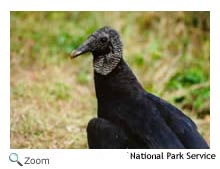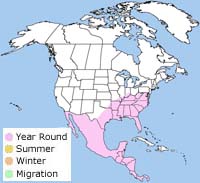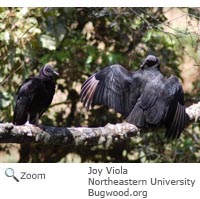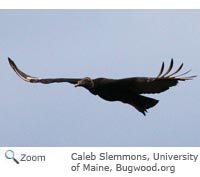Black Vulture - Coragyps atratus |
|||||||||||
Description
Range Habitat
| Diet
Life CycleThe female black vulture lays 2 eggs under a bush, in a hollow log, under large rocks, or in a cave. Both the male and the female incubate the eggs for 32-41 days. The chicks fledge when they are 63-70 days old. BehaviorThe black vulture is very protective of the carrion it finds and aggressively drives the larger turkey vulture away from a find! It is normally a silent bird, but it hisses, grunts, and even barks to drive other scavengers away from its food. |
||||||||||
Audio Credit: xeno-canto.org Bernabe Lopez-Lanus |
|||||||||||



 The black vulture is found from
southern New York and southern Ohio south to Texas and Central and South America.
Birds in the northern part if its range may migrate in the fall. It is occasionally seen as far north as Maine.
The black vulture is found from
southern New York and southern Ohio south to Texas and Central and South America.
Birds in the northern part if its range may migrate in the fall. It is occasionally seen as far north as Maine.

